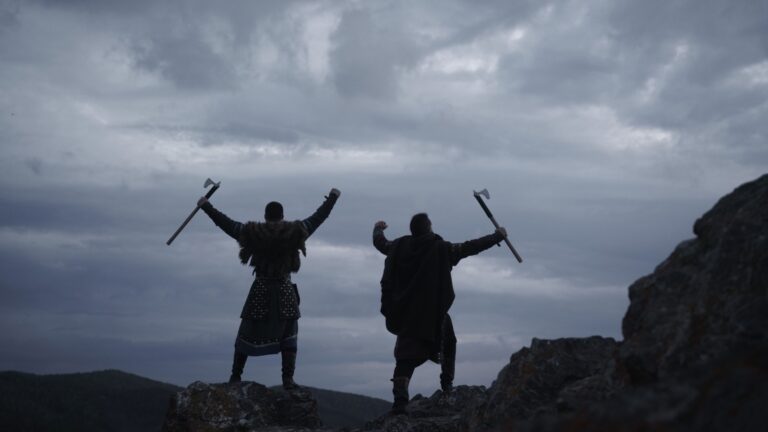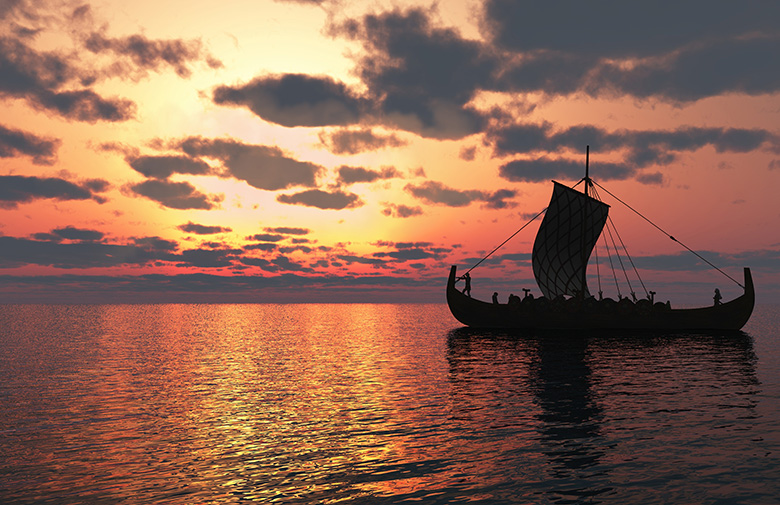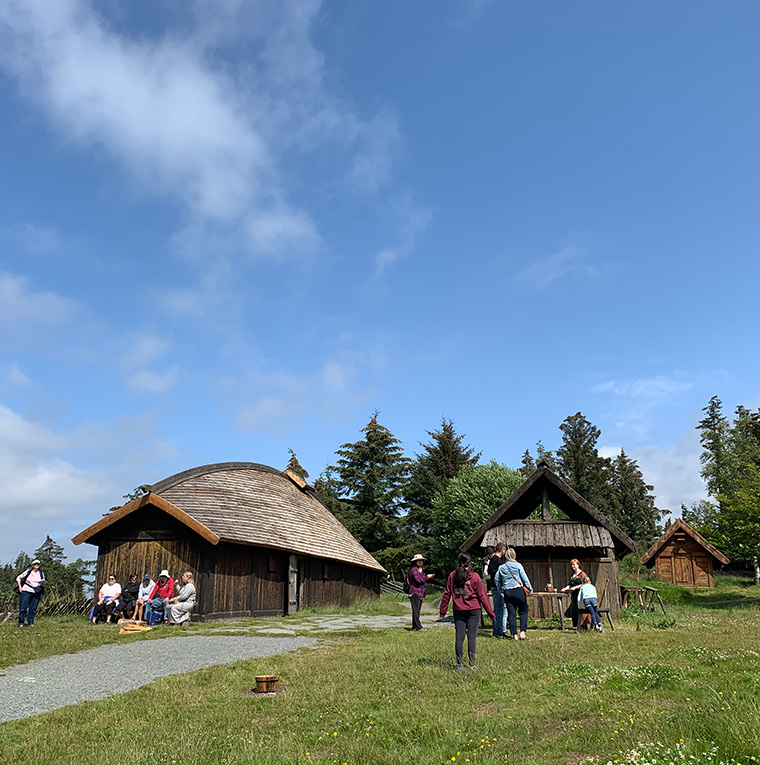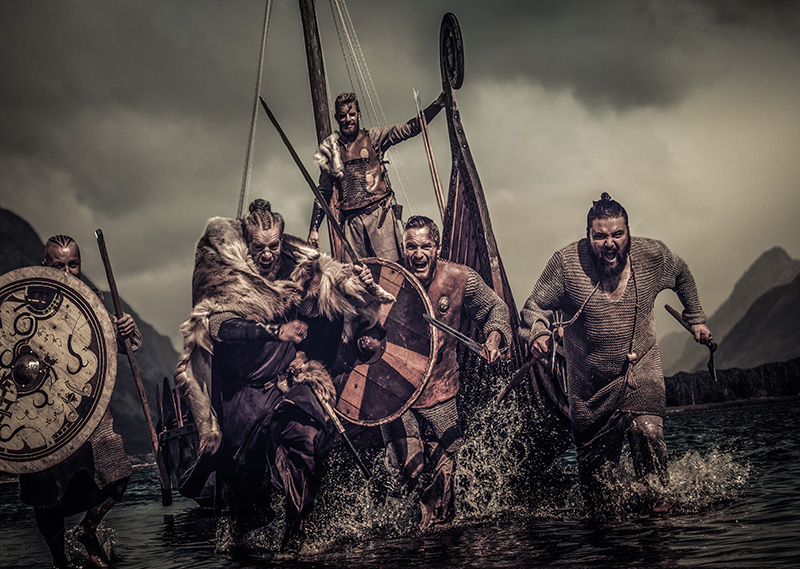Recent discoveries reveal how trade networks, environmental pressures, and social dynamics converged to drive Scandinavians from their homelands, reshaping Europe through exploration, conquest, and cultural exchange.
In the summer of 793 CE, seaborne raiders from what is now Norway descended on the island monastery of Lindisfarne off England’s coast.

The attack was ferocious. Monks were murdered or enslaved, treasures were seized. It shocked medieval Europe and later generations marked it as the start of the Viking Age. But why did it happen then?
What drove these Scandinavians to suddenly fan out from their northern homelands? For years, popular explanations ranged from overpopulation to sheer greed.
Now, thanks to recent archaeological finds, climate research, and even ancient DNA analysis, historians are piecing together a more nuanced story. It turns out the Viking Age didn’t simply “begin” on a single bloody day.
It was decades in the making, fueled by a convergence of vibrant trade networks, environmental pressures, and evolving social structures in Scandinavia. And fittingly, much of this story begins in Norway, whose rugged coasts and ambitious chieftains were at the heart of the saga.
The Traders Who Set Sail Before the Raiders
Long before Vikings were feared as marauders, they were known as merchants. Recent evidence suggests that Scandinavian seafarers were undertaking long voyages for trade well before their first raids on foreign shores.
Archaeologists from the University of York, for example, identified signs of Viking voyaging as early as the 720s CE, about 70 years before the Lindisfarne raid.
In those pre-Viking decades, Norwegian traders regularly sailed south to the bustling marketplace of Ribe on Denmark’s west coast. Ribe was the first true town in Scandinavia and by the early 8th century it was a thriving international port.
Among the most telling finds there were fragments of reindeer antler. Reindeer do not roam Denmark, so the antlers had to come from elsewhere. Sure enough, scientific analysis showed they were imported, likely by Norwegians ferrying antlers across the sea.
Why haul antlers? In the Viking Era, antlers were the raw material for a booming craft: making ornate hair combs. A professional comb-maker in Ribe would have struggled to find enough local deer antler to meet demand. So enterprising Norse traders from the Arctic outlands supplied this precious resource, establishing an organized supply network.

“People in the more remote parts of Scandinavia were visiting places like Ribe, presumably for commercial gain, from a very early stage,” explains Dr. Steve Ashby, one of the researchers behind the Ribe study.
These peaceful voyages, he notes, are “a vital contribution to the question of what caused the Viking Age”: they show that towns and maritime trade were the engine driving the changes to come.
In other words, the Viking Age may have dawned not with a sword’s swing, but with the quiet exchange of goods and the honing of sailing skills.
A collection of colourful glass beads unearthed in Ribe, dated to around the late 8th century, highlights the far-flung networks that reached Scandinavia by the dawn of the Viking Age.
Those glass beads arrived via expanding trade routes that inked Scandinavia to the Middle East and Central Asia. In fact, archaeologists can precisely date the influx of Middle Eastern trade goods in Ribe to about 790 CE, almost exactly the time the Viking raid era was beginning.
This includes beads like those above, and a flood of Islamic silver coins that would soon find their way into Viking treasure hoards. Crucially, however, the latest studies show that Scandinavian seafarers had established long-distance maritime networks decades before the big wave of Islamic silver and eastern gems arrived.
From the North Sea to the Baltic and down the rivers of Russia, enterprising Norse traders exchanged furs, timber, and slaves for foreign luxuries like silks, spices, and metals.
One Norwegian market town in particular illustrates this interconnected world: Kaupang, established around 800 CE in Vestfold, is considered Norway’s first urban trading centre.
Located on the Skagerrak strait, Kaupang’s ruins have yielded Arabic coins, Byzantine glassware, and other imports from distant lands. This little Norwegian port was a melting pot of cultures, hosting merchants from across Scandinavia and beyond, all drawn by pre Viking Age commerce.

So, by the late 700s, Norse mariners had the skills, ships, and knowledge to travel great distances, and to spot opportunities for more aggressive ventures.
Climate and Land Pressures
Scandinavia's geography and climate posed challenges for survival, especially in Norway where farmland was scarce.
Mountainous terrain and narrow coastal strips limited the amount of land available for agriculture, making subsistence farming difficult. Environmental crises further shaped the era, often determining the trajectory of settlement and migration.
Around 536 and 540 CE, two massive volcanic eruptions ejected ash and aerosols into the atmosphere, causing widespread global cooling. Tree-ring data and ice-core samples confirm that these years were marked by significantly reduced solar radiation and plummeting summer temperatures.
In Scandinavia, these conditions led to crop failures, famine, and a dramatic population collapse. Some archaeologists believe up to half the population may have perished in the aftermath.
These catastrophic events left a lasting imprint not just demographically, but culturally. Some scholars argue that Norse mythology absorbed echoes of this trauma.
The myth of Fimbulvinter, a long and deadly winter preceding Ragnarök (the end of the world), may be rooted in folk memory of this sixth-century disaster. Across Scandinavia, archaeological finds reveal a surge in buried treasure hoards around this time, interpreted by some as ritual offerings to appease the gods or ensure survival.
Though the climate eventually stabilised, arable land remained limited. By the 8th century, a period of relative warmth allowed for agricultural recovery and expansion. Improved growing conditions supported rising populations, but this created new pressures.
In regions like western Norway, nearly every viable patch of farmland was already in use. Families could not easily divide farms among heirs without reducing them below subsistence levels. As younger sons and ambitious farmers found no room to expand, many looked abroad.
The pursuit of new lands in Iceland, the British Isles, and beyond became a logical solution to domestic scarcity. Norse colonisation of places like the Faroe Islands and Iceland was often led by settlers seeking arable land rather than raiders chasing treasure.

To survive in such an unpredictable environment, Scandinavian communities adapted by diversifying their economies. They mixed cereal farming with livestock grazing, seasonal fishing, and even seal hunting along the coast.
This hybrid subsistence model ensured flexibility in times of climatic stress. It also encouraged a maritime mindset. If local conditions failed, the sea offered food and trade opportunities.
Over generations, this dependence on the ocean produced a culture of capable sailors, navigators, and boatbuilders. This seafaring tradition was not born overnight, but developed steadily through necessity.
Power, Prestige, and Expansion
Social and political change within Scandinavia also contributed. By the late 8th century, Scandinavian society was in flux. Petty chieftains were consolidating power, and elite competition was intense.
In Norway, rivalries among minor kings contributed to instability. Raiding abroad became a way for leaders to gain wealth, fame, and followers. Those who returned with silver, slaves, or exotic goods could elevate their status at home.
Many Viking expeditions were mixed ventures, combining trade, raiding, and exploration. Crews might begin the season trading and then strike targets of opportunity. Success abroad often translated into greater power at home.
Raiding also offered a path for those displaced by political upheaval. Later sagas tell of Norwegians fleeing harsh rule or failed bids for power to seek new opportunities in Iceland or the British Isles.
Technological advances made such voyages possible. Longships, such as the Oseberg ship, featured both sails and shallow hulls, allowing for swift sea travel and river navigation. These innovations expanded the Vikings' operational range.
The Salme ship burials in Estonia, dating to around 750 CE, suggest that seafaring raids were underway even before the Lindisfarne raid, with well-armed Norse crews crossing the Baltic on sailing ships.
Genetic Evidence and Cultural Exchange
The Viking Age was not only a story of outward movement but also of exchange and return.
Genetic studies of Viking Age burials across Scandinavia have revealed significant gene flow from the British Isles, the Baltic, and even parts of southern Europe.

This movement was especially visible in female genetic markers, suggesting that Viking expeditions brought back foreign women as wives, concubines, or slaves.
A 2020 study published in Nature analysed nearly 300 ancient genomes and found a striking diversity in Viking Age populations.
In Norway, Denmark, and Sweden, many burial sites contained individuals with non-Scandinavian ancestry, particularly from Ireland, the Scottish Isles, and western Russia. Some burials even reflected mixed heritage, showing that integration could happen within a single generation.
This genetic mixing tells a broader story about Viking activity. It was not just violent raids and fleeting encounters, but also long-term settlement and interaction. Foreigners were brought home and became part of Norse society.
Over time, this resulted in cultural and demographic change. Norse households were transformed by these newcomers, whose languages, customs, and beliefs gradually influenced daily life.
Material culture supports this view: artefacts such as clothing pins, ceramics, and personal jewellery from across Europe and Asia have been found in Scandinavian graves. These imports were not just loot but part of a wider pattern of exchange and incorporation.
Why Then?
By 793, all the necessary conditions had come together. Scandinavia had a rising population, limited farmland, advanced shipbuilding, and access to international trade.
Ambitious leaders sought wealth and prestige, and young men sought adventure or escape.
Climate recovery after earlier catastrophe allowed agriculture to flourish just enough to support more people, but not enough to sustain all at home. Social tensions and elite rivalries pushed some to seek their fortunes overseas.
The Viking Age did not begin because of a single cause. It was the result of overlapping trends: economic, environmental, political, and technological.
Recent research, from archaeological digs to climate analysis and DNA studies, reveals how deeply interconnected these forces were. The attack on Lindisfarne was not an isolated outburst of violence but a signpost marking the next phase of a long transformation.
In Norway, that transformation began in places like Kaupang and along the rugged coastlines where traders turned raiders and explorers. The Viking Age emerged when the people of Scandinavia seized the moment to expand their world, and in doing so, reshaped the history of Europe.


What about population increases and lack of fertile land to grow the additional food needed, thus expansion overseas to find more space. Classic colonisation behaviour
I agree with you Roger. My ancestors traveled to America in the 1800’s for the same reasons. Most were youngest in their families. The oldest got the land in Norway so their main choice was fishing or fishing related work. If they grew up on a farm, farming was their choice. Free land in America was calling them.
Nonsense. The Vikings retaliated against Christian religious persecution that had been raiding Nordic trading centers lke Dorestad for decades! The Christians were the raiders and rapists!
Population growth has been speculated since a similar thing hapened recently. This was not the reason for the Viking Age as the weather was warmer from n
global warming during that period, farming was highly effective methodology for feeding the few people that lived in Sacandinavia, at that time.
The most logical explanation was the rise of the Franks and the spread of the Imperialist era in Europe and the dark religion of Catholicism. The Saxon peoples were being attacked and dominated by the Franks and the RC religion was speading like cancer through the middle of Europe. The Scandinavians fought back and chose soft targets such as Monastic settlements.
Once the pirates with Government backing saw the wealth to be gained from exploiting weaker catholicised populations, the business of being a privateer became very popular.
The Viking raids were an example of war by proxy.
Potato blight also contributed to emigration in the 1800s. It didn’t just hit Ireland.